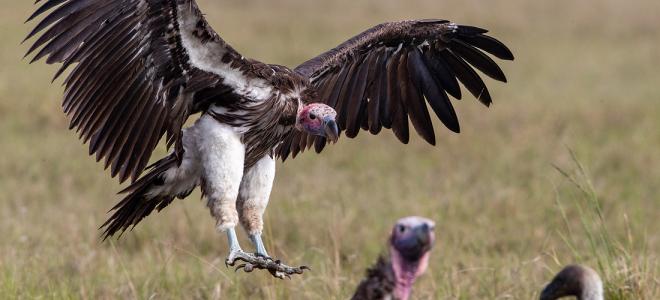Our team Is made up of dedicated men and women who, collectively, have decades of experience working in conservation and community engagement. Each team member brings their own perspective, knowledge, and skills and this diversity makes our team stronger.
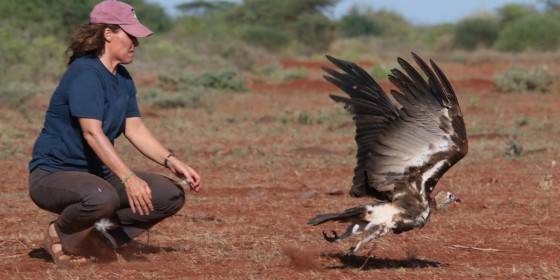
Darcy Ogada
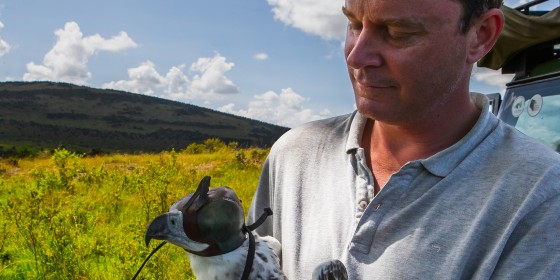
Ralph Buij
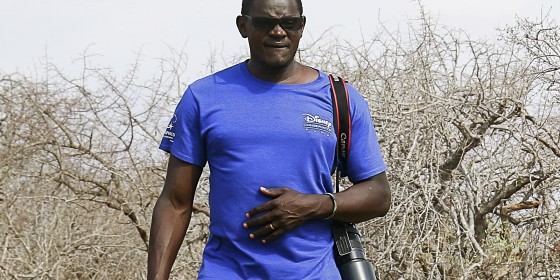
Martin Odino
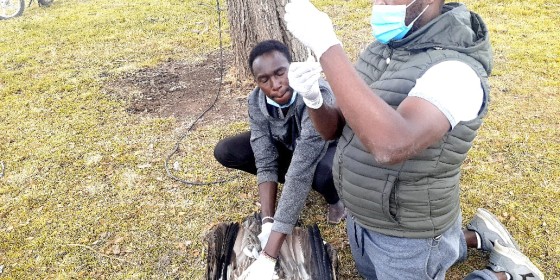
Eric Ole Reson
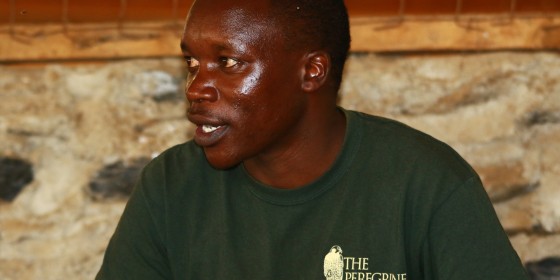
Alfred Koech
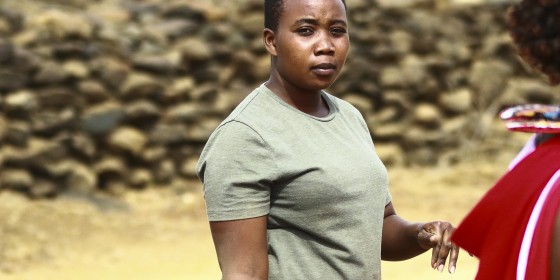
Geraldine Rotich
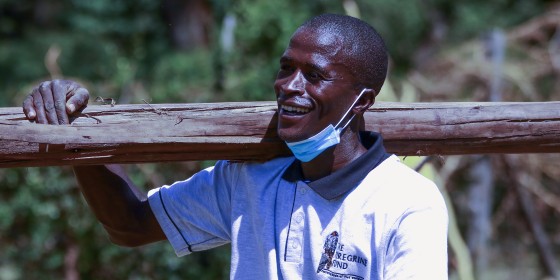
Alex Nawoi
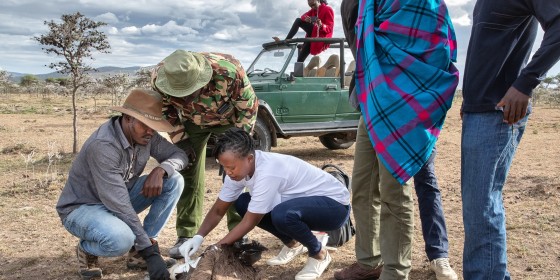
Valerie Nasoita Sankok
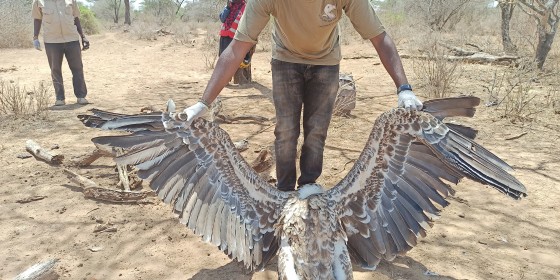
Abraham Loomuna Nkumama
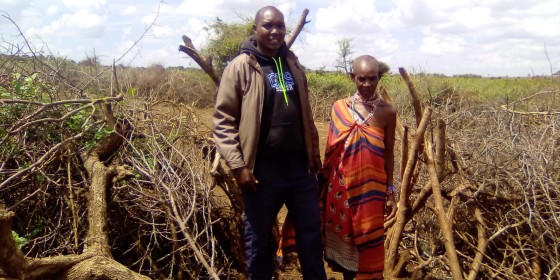
Kelvin Ntina Murasimi

Isaac Mpepedoi Tarayia
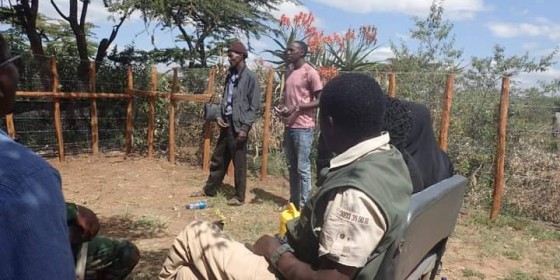
Benjamin Lemein
Read Some of our Latest Publications
Awareness of environmental legislation as a deterrent for wildlife crime: A case with Masaai pastoralists, poison use and the Kenya Wildlife Act
Didarali, Z., Kuiper, T., Brink, C.W. et al.
Abstract - Illegal wildlife crime is a global phenomenon, accelerating the ongoing biodiversity crisis. In the Old World, and particularly in Africa, illegal use of poisons to eliminate carnivores is the main driver of the continental vulture crisis. Knowledge about the underlying source and drivers of this threat is lacking for most areas, including Kenya, a global vulture and biodiversity hotspot. An extensive questionnaire survey of over 1300 respondents was run, using a specialized questioning technique and quantitative analytical approaches. Results show that, while pastoralists have a positive attitude towards vultures, over 20% of them use poisons to eliminate predators. Poisoning was largely driven by livestock losses to predators, and by negative attitude towards predators. Poisoning was less prevalent among respondents aware of the Kenya Wildlife Act. Overall, we suggest that a combination of top-down, e.g. legislation, and bottom-up (such as corrals or compensation) along with awareness campaigns may help reduce poisoning on the ground.
Understanding continent-wide variation in vulture ranging behavior to assess feasibility of Vulture Safe Zones in Africa: Challenges and possibilities
Kane, A., Monadjem, A., Aschenborn, H.K.O. et al.
Abstract - Protected areas are intended as tools in reducing threats to wildlife and preserving habitat for their long-term population persistence. Studies on ranging behavior provide insight into the utility of protected areas. Vultures are one of the fastest declining groups of birds globally and are popular subjects for telemetry studies, but continent-wide studies are lacking. To address how vultures use space and identify the areas and location of possible vulture safe zones, we assess home range size and their overlap with protected areas by species, age, breeding status, season, and region using a large continent-wide telemetry datasets that includes 163 individuals of three species of threatened Gyps vulture. Immature vultures of all three species had larger home ranges and used a greater area outside of protected areas than breeding and non-breeding adults. Cape vultures had the smallest home range sizes and the lowest level of overlap with protected areas. Rüppell's vultures had larger home range sizes in the wet season, when poisoning may increase due to human-carnivore conflict. Overall, our study suggests challenges for the creation of Vulture Safe Zones to protect African vultures. At a minimum, areas of 24,000 km2 would be needed to protect the entire range of an adult African White-backed vulture and areas of more than 75,000 km2 for wider-ranging Rüppell's vultures. Vulture Safe Zones in Africa would generally need to be larger than existing protected areas, which would require widespread conservation activities outside of protected areas to be successful.
A strategy for conserving old world vulture populations in the framework of one health
Smit-Robinson, H., Thompson, L.J., van den Heever, L. et al.
Abstract - One Health brings the powerful interrelationship between human and wildlife health together with ecosystem health. The initial concept of One Health was formulated decades ago and focused on disease transfer from wildlife to human populations. More recently, the concept has been used to associate resilience to disease with the health of the ecosystem and resilience to environmental stressors. The need for a One Health approach is particularly evident in the plight of Old World vultures, which are facing a conservation crisis due to drastic reductions in populations across their entire range. Moreover, vulture conservation exemplifies many contemporary tenets of One Health; vultures are critical to a sustainable and resilient ecosystem, which in turn is essential for the socio-ecological health of human communities. In this review, we examine the complex factors contributing to the demise of Old World vulture populations, using the lens of One Health to conceptualize the primary drivers impacting the health and sustainability of these populations. The One Health concept provides the basis for the development of a framework that incorporates a multidimensional approach and includes human health, wildlife health, environmental and disease-related stressors, disease incidences, societal pressures, and environmental contaminants. Integrating societal needs with management aimed at maintaining healthy vulture populations is key for successfully using a One Health framework to optimize the health of human and wildlife populations and ensure ecosystem health.
Raptor research during the COVID-19 pandemic provides invaluable opportunities for conservation biology
Sumasgutner, P., Buij, R., McClure, C.J.W., et al.
Abstract - Research is underway to examine how a wide range of animal species have responded to reduced levels of human activity during the COVID-19 pandemic. In this perspective article, we argue that raptors (i.e., the orders Accipitriformes, Cariamiformes, Cathartiformes, Falconiformes, and Strigiformes) are particularly well-suited for investigating potential ‘anthropause’ effects: they are sensitive to environmental perturbation, affected by various human activities, and include many locally and globally threatened species. Lockdowns likely alter extrinsic factors that normally limit raptor populations. These environmental changes are in turn expected to influence – mediated by behavioral and physiological responses – the intrinsic (demographic) factors that ultimately determine raptor population levels and distributions. Using this population-limitation framework, we identify a range of research opportunities and conservation challenges that have arisen during the pandemic, related to changes in human disturbance, light and noise pollution, collision risk, road-kill availability, supplementary feeding, and persecution levels. Importantly, raptors attract intense research interest, with many professional and amateur researchers running long-term monitoring programs, often incorporating community-science components, advanced tracking technology and field-methodological approaches that allow flexible timing, enabling continued data collection before, during, and after COVID-19 lockdowns. To facilitate and coordinate global collaboration, we are hereby launching the ‘Global Anthropause Raptor Research Network’ (GARRN). We invite the international raptor research community to join this inclusive and diverse group, to tackle ambitious analyses across geographic regions, ecosystems, species, and gradients of lockdown perturbation. Under the most tragic of circumstances, the COVID-19 anthropause has afforded an invaluable opportunity to significantly boost global raptor conservation.
Priority areas for vulture conservation in the Horn of Africa largely fall outside the protected area network
Buechley, E., Girardello, M., Santangeli, A., et al.
Abstract - Vulture populations are in severe decline across Africa and prioritization of geographic areas for their conservation is urgently needed. To do so, we compiled three independent datasets on vulture occurrence from road-surveys, GPS-tracking, and citizen science (eBird), and used maximum entropy to build ensemble species distribution models (SDMs). We then identified spatial vulture conservation priorities in Ethiopia, a stronghold for vultures in Africa, while accounting for uncertainty in our predictions. We were able to build robust distribution models for five vulture species across the entirety of Ethiopia, including three Critically Endangered, one Endangered, and one Near Threatened species. We show that priorities occur in the highlands of Ethiopia, which provide particularly important habitat for Bearded Gypaetus barbatus, Hooded Necrosyrtes monachus, Ru¨ ppell’s Gyps ru¨ ppelli and White-backed Gyps africanus Vultures, as well as the lowlands of north-eastern Ethiopia, which are particularly valuable for the Egyptian Vulture Neophron percnopterus. One-third of the core distribution of the Egyptian Vulture was protected, followed by the White-backed Vulture at one-sixth, and all other species at one-tenth. Overall, only about one fifth of vulture priority areas were protected. Given that there is limited protection of priority areas and that vultures range widely, we argue that measures of broad spatial and legislative scope will be necessary to address drivers of vulture declines, including poisoning, energy infrastructure, and climate change, while considering the local social context and aiding sustainable development.
Lack of standardization in the use of road counts for surveying raptors
McClure, C.J.W., Carignan, and Buij, R.
Abstract - Examination of population trends for raptors is a research priority, especially given recent concern for their conservation status. Road counts—in which raptors are counted from a motorized vehicle moving along the ground—might be an effective method to expand the monitoring of raptor populations and estimation of trends. Here, we review past methods used to perform road counts of raptors and present revised recommendations to aid collaboration, data transfer, and interpretation of results across monitoring programs. We performed a standardized keyword search of online literature databases to obtain 148 past road count studies. The number of studies employing road counts increased per year since the 1970s. Most of these studies occurred in North America. The times of day during which road counts were conducted ranged from sunrise to sunset, and maximum speeds ranged from 10 to 113 km hr–1. The number of observers ranged from 1 (the driver) to 5. Most (93) of the studies used unlimited-width transects and fixed-width transects ranging from 0.02 to 2.50 km wide. Sixteen percent of studies calculated or corrected for the probability of detection. Such broad variation in the methodology used during road counts, coupled with infrequent correction for detection, hampers the interpretation of results across road survey programs. We suggest that road count practitioners should emphasize the collection of data, such as speed, number of observers, and distance to observed raptors, which would allow for the calculation of detection-corrected estimates. Such correction would likely improve trend estimation. Recent technology, including mobile apps, allows researchers to collect such data relatively easily, conducting their own studies while contributing to a broader raptor monitoring initiative. Road counts will likely become more useful as statistical analysis of road count data improves and researchers pool their data in a global effort to monitor raptors.
Flight Altitudes of Raptors in Southern Africa Highlight Vulnerability of Threatened Species to Wind Turbines
McClure, C.J.W., Dunn, L., McCabe, J.D., et al.
Abstract - Energy infrastructure, particularly for wind power, is rapidly expanding in Africa, creating the potential for conflict with at-risk wildlife populations. Raptor populations are especially susceptible to negative impacts of fatalities from wind energy because individuals tend to be long-lived and reproduce slowly. A major determinant of risk of collision between flying birds and wind turbines is the altitude above ground at which a bird flies. We examine 18,710 observations of flying raptors recorded in southern Africa and we evaluate, for 49 species, the frequency with which they were observed to fly at the general height of a wind turbine rotor-swept zone (50–150 m). Threatened species, especially vultures, were more likely to be observed at turbine height than were other species, suggesting that these raptors are most likely to be affected by wind power development across southern Africa. Our results highlight that threatened raptor species, particularly vultures, might be especially impacted by expanded wind energy infrastructure across southern Africa.
Evidence of widespread declines in Kenya's raptor populations over a 40-year period
Ogada, D., Virani, M.Z., Thiollay, J.M., et al.
Abstract - Kenya's wildlife has been declining substantially for decades, due to rapid human population growth and its associated impacts on natural habitats. Predators and scavengers are particularly sensitive to anthropogenic pressures, and their changing status has corresponding impacts on the ecosystem services they provide. To estimate rates of change in Kenya's raptor populations we compared linear encounter rates (individuals 100 km − 1) recorded during road surveys conducted in 1970-1977 and 2003-2020. Encounter rates for 19 out of 22 species examined had fallen, by a median of 70% among those showing a significant or near-significant change. No species had increased significantly. Declines had occurred among all vulture and large eagle species, and were especially pronounced among once-common small and medium-sized raptors. Our findings demonstrate the importance of protected areas (PAs) for Kenya's remaining raptor populations. The median encounter rate for vultures and large eagles had dropped by 23% within PAs and by 76% in unprotected areas. Smaller species showed divergent trends in relation to PA status, their median encounter rate increasing by 104% within PAs while declining by 85% elsewhere. Based on projected declines over three generation lengths, 45% of the species examined would qualify as nationally Endangered or Critically Endangered. Key threats include electrocution/collision with energy infrastructure, deliberate and incidental poisoning, and impacts associated with habitat degradation. Kenya's raptor declines could be reversed through enhanced management of PAs, mitigation of specific threats and the implementation of species recovery plans; all requiring steadfast government commitment and close collaboration with conservation stakeholders.
Functional traits driving species role in the structure of terrestrial vertebrate scavenger networks
Sebastian-Gonzalez, E., Morales-Reyes, Z., Botella, F., et al.
Abstract - Species assemblages often have a non-random nested organization, which in vertebrate scavenger (carrion-consuming) assemblages is thought to be driven by facilitation in competitive environments. However, not all scavenger species play the same role in maintaining assemblage structure, as some species are obligate scavengers (i.e., vultures) and others are facultative, scavenging opportunistically. We used a database with 177 vertebrate scavenger species from 53 assemblages in 22 countries across five continents to identify which functional traits of scavenger species are key to maintaining the scavenging network structure. We used network analyses to relate ten traits hypothesized to affect assemblage structure with the “role” of each species in the scavenging assemblage in which it appeared. We characterized the role of a species in terms of both the proportion of monitored carcasses on which that species scavenged, or scavenging breadth (i.e., the species “normalized degree”), and the role of that species in the nested structure of the assemblage (i.e., the species “paired nested degree”), therefore identifying possible facilitative interactions among species. We found that species with high olfactory acuity, social foragers, and obligate scavengers had the widest scavenging breadth. We also found that social foragers had a large paired nested degree in scavenger assemblages, probably because their presence is easier to detect by other species to signal carcass occurrence. Our study highlights differences in the functional roles of scavenger species and can be used to identify key species for targeted conservation to maintain the ecological function of scavenger assemblages.
Presumed killers? Vultures, stakeholders, misperceptions, and fake news
Lambertucci, S.A., Margalida, A., Speziale, K.L., et al.
Abstract - Vultures and condors are among the most threatened avian species in the world due to the impacts of human activities. Negative perceptions can contribute to these threats as some vulture species have been historically blamed for killing livestock. This perception of conflict has increased in recent years, associated with a viral spread of partial and biased information through social media and despite limited empirical support for these assertions. Here, we highlight that magnifying infrequent events of livestock being injured by vultures through publically shared videos or biased news items negatively impact efforts to conserve threatened populations of avian scavengers. We encourage environmental agencies, researchers, and practitioners to evaluate the reliability, frequency, and context of reports of vulture predation, weighing those results against the diverse and valuable contributions of vultures to environmental health and human well-being. We also encourage the development of awareness campaigns and improved livestock management practices, including commonly available nonlethal deterrence strategies, if needed. These actions are urgently required to allow the development of a more effective conservation strategy for vultures worldwide.
The Intentional Use of Pesticides as Poison in Kenya: Conservation and Ecohealth Impacts
Odino, M. and Ogada, D.
Abstract - In Kenya, deliberate poisoning of birds for human consumption, particularly the poisoning of flocking water birds and seedeaters, is a practice that takes place primarily on large-scale, irrigated cereal plantations. Mass poisonings of vultures are also of concern in Kenya when they feed on poisoned carcasses. This occurs when livestock farmers poison livestock carcasses to use as bait for wild predators suspected of killing livestock, with vultures falling victim to such retaliatory efforts. Pesticides and topical antiparasitics, readily available over the counter in Kenya, are commonly used, overused, and misused by farmers, with little to no regulatory controls and/or unknown impacts on biodiversity and ecosystem health. Social surveys were conducted across various parts of Kenya and a case study of quantifying intentional bird poisoning was conducted at Bunyala Rice Irrigation Scheme (Bunyala Rice Plantation), a known bird poisoning hot spot in Kenya, to determine the extent of poisoning by the carbamate pesticide carbofuran and other poisons. Results from these studies reveal the extensive use of carbofuran as an intentional poison agent for birds and scavenger-predator wildlife, with carbosulfan also used against the latter. Further, glyphosates and vermin poisons were found to result in unintentional poisonings in livestock, pets, and even humans. Despite the withdrawal of carbofuran from the Kenyan market in 2009 by the manufacturer, Farm Machinery and Chemicals (FMC), carbosulfan, which metabolizes to carbofuran, and other chemicals are readily available for purchase and use. A general lack of adequate legislation, control, and enforcement of pesticide use in Kenya has allowed for the widespread, indiscriminate use of pesticides beyond their intended means, with potentially devastating consequences from an ecological standpoint.
